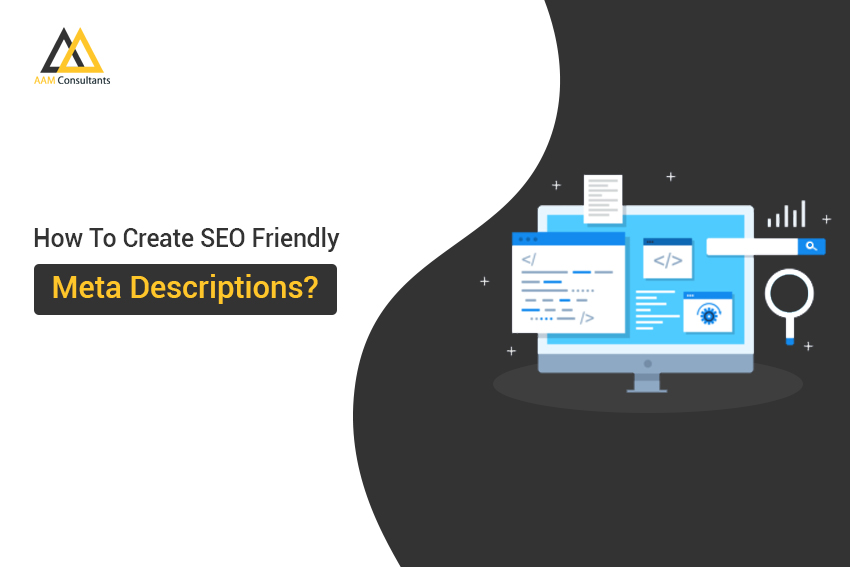Effective SEO is guided by several best practices that can influence the quality and quality of your website traffic; this has a knock-on effect when you consider click-through rates and revenue streams. Many marketers believe in the best practices of the day; those are the ones that directly affect your search engine ranking. These are crucial, but older practices still have value, such as meta descriptions.
Meta descriptions are the short line used as a subheading. It appears below your title tag and has a direct relevance to the user’s search and the Web page’s content. Although meta descriptions no longer affect the search engine’s ranking position, they can heavily influence a user’s online behaviour, which has a knock-on effect. In other words, a good meta description is still relevant to your search engine ranking and website’s SEO performance.
What is an SEO Meta Description
An SEO meta description is the link between the content on the page and the title tag. It is not only a written description of the content; it’s also a piece of html code that informs the search engine about the quality and relevance of the content. In html language and meta description may look like this:
<meta name = “description” content=”this is where you contain your SEO meta description blub. It should be written for a human audience and should contain almost 160 characters”/>
The text from the meta description appears on the search results page (SERP) along with the Title Tag and Slug. The title tag is the headline of the page that contains the primary keyword, and the Slug is the URL for the page. All of this data appears together on the SERPs page and is relevant to how users find your content.
Benefits of a Good Meta Description
Google has said that meta descriptions don’t form part of its ranking criteria; despite this, meta descriptions still have a bearing on a website’s traffic and search performance. A meta description, for instance, can affect user engagement and encourage click-through rates.
Meta Descriptions are mini Ads – although not used as ranking data, meta descriptions appear on SERPs, and social media news feeds – they give users an idea of your content.
Meta descriptions look good on SERPs – if you don’t tell search engines and social platforms what metadata to use, they create their own; this is often functional and can look ugly.
Meta descriptions increase CTRs – use your meta description to extend the keyword in the title. Users will be more engaged if they can see the value of the title.
Higher CTRs improve search ranking – meta descriptions don’t improve search ranking on their own, but they encourage CTRs, which does indicate to search engines that content is valuable.
Meta descriptions can incorporate snippets – although description and snippets such as links, icons, images, and content are not search engine criteria, they improve the performance of search engine optimization in a supporting capacity.
How do I Create a Meta Description
Get the length right
Your meta description is displayed under your title tag on the SERPs page; although it’s not used directly as ranking data, it does contribute to user engagement and CTRs. To craft one that is effective, and you first need to consider the length. Google will cut off any description longer than 160 characters, so you need to contain the relevant informant in this line. Your meta description should describe the page’s content and also be compelling.
Write it like Ad copy
The meta description appears on the SERPs page as a short, concise description of what you will find on the Web page. In many ways, it performs like an Ad leading to a landing page. It must be compelling, relevant, and use action language to encourage users to click through. You might also consider using your primary keyword again or a variation of this to create relevance in your copy.
Include keywords
It’s worth remembering the importance of keywords for your meta descriptions. When a user searches for a keyword relevant to your Web page, Google will highlight those keywords of the SERPs page. Take advantage of this system and include your primary keyword in the meta-description. If possible, you could also include a secondary keyword.
Meta Description, Best Practices
Meta descriptions offer hosts the chance to improve their search engine rankings indirectly by creating the conditions around ranking factors such as click-through rates. Writing an effective meta description isn’t hard, but there are a few things to keep in mind.
Use action-oriented language
Call to action copy always uses action language like learn, discover or grab to motivate users to click through. A meta description is like this, too; it’s the same as call to action copy. Use action language in your description to tell users exactly what they will get when they click your link.
Provide a solution or benefit
If you care about your website’s bounce rate and the experience of users, you will want to provide them with value for their engagement. Do this by creating a meta description that accurately describes what is on the Web page. The last thing anyone wants is for users to press the back button.
Keep it under 160 characters
Google doesn’t measure your meta description by characters; it measures them by pixels. A useful benchmark, however, is 160 characters. This gives hosts and marketers an idea on how long a meta description should be. Stick to this to avoid automatically generated descriptions.
Don’t deceive searchers
The SEO used to work encouraged keyword stuffing, which meant that users discovered pages with no relevance to the description. Adapted algorithms have changed this and meant that relevance is key to ranking. Today, if you deceive users, you will be red-flagged.
Make it specific and relevant
Average searchers know intuitively what meta descriptions are best suited to what they’re searching. Don’t use generic words, phrasing, or any fluff. You only have a short line to work with so do your best to relate the content and engage with your target audience.



